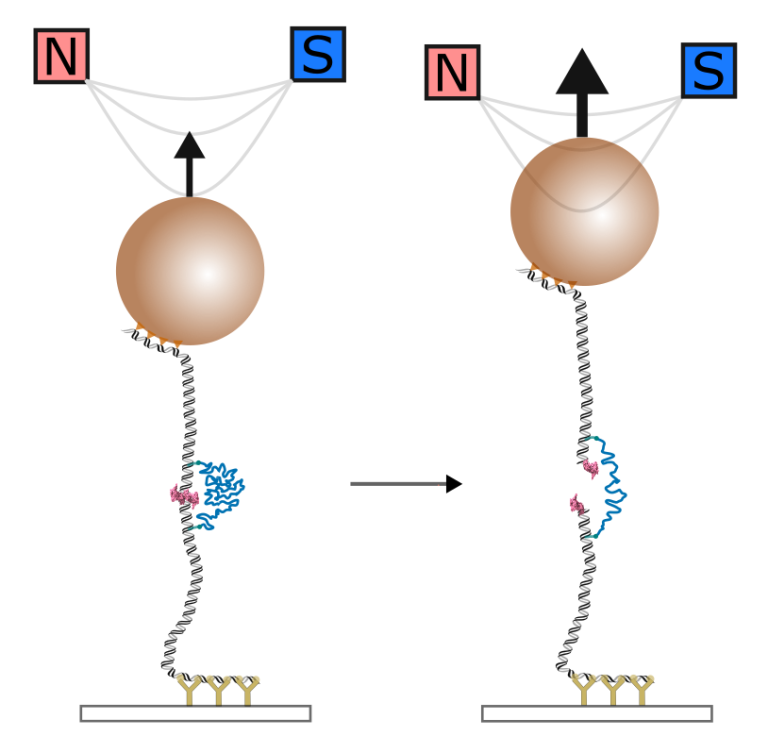New study uses single-molecule techniques to study how proteins repair damaged DNA by Bell lab
22 May 2023
New research by the Bell lab, published in PNAS, uses single-molecule techniques to study how proteins repair damaged DNA.

The DNA in our cells constantly accumulates different forms of damage. This damage can be caused by factors outside the cell such as UV light but also from the by-products that the cell produces during natural processes such as metabolism. One particular form of DNA damage, called a DNA double-strand break, occurs when both strands of the DNA double-helix are broken close to each other. A large number of proteins in the cell work to recognise and repair this type of DNA damage.
In this work, we developed a microscopy method to study how these DNA repair proteins structurally organise themselves at a DNA double-strand break. This new technique uses magnetic fields to apply forces onto DNA while simultaneously measuring the binding of proteins that assemble at the DNA damage site. Our experiments revealed how some of the key human proteins involved in DNA repair are able to stabilise DNA double-strand breaks. These results give us a new understanding of the basic mechanisms of how these proteins function, which may aid in the development of drugs which target DNA repair proteins in cancer therapy.
Links
- Research article in PNAS
- Professor Nicholas Bell academic profile
- UCL Physics & Astronomy
- Laboratory for Molecular Cell Biology
- UCL Institute for the Physics of Living Systems
 Close
Close

